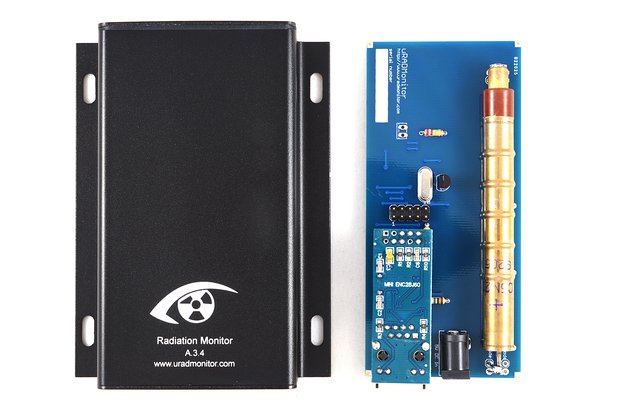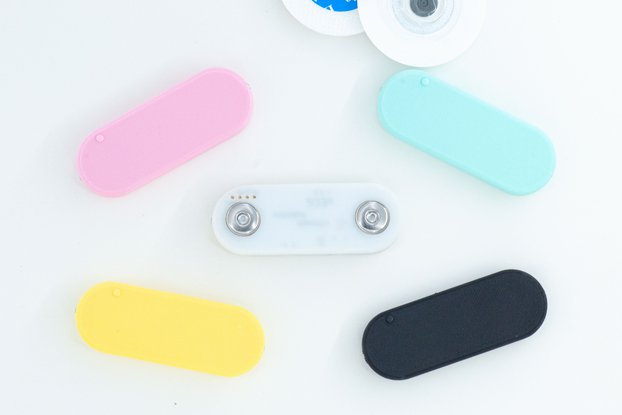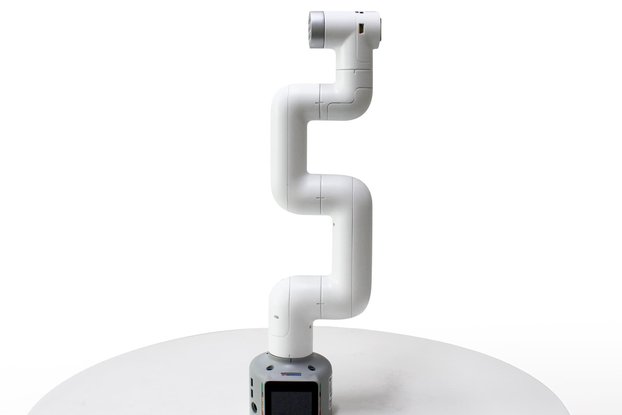An open-source teaching and prototyping platform for autonomous research using dimmable LEDs and a spectrophotometer
Designed by Closed-loop Spectroscopy Lab in United States of AmericaNo shipping info available.
Set destination country to see options
Shipping to starts at
Free shipping is available to !
Ships from
This item does not ship to .
More Info
Sign up to get notified when this product is back in stock!
Overview We need new materials faster than ever to solve global challenges such as climate change, plastics pollution, and cancer. Autonomous research laboratories, also called "self-driving" laborat…
Read More…We need new materials faster than ever to solve global challenges such as climate change, plastics pollution, and cancer. Autonomous research laboratories, also called "self-driving" laboratories, can accelerate the time-to-market from 20 years and $100 million to as little as 1 year and $1 million. However, the barrier to entry for researchers is high in terms of both capital and multi-disciplinary expertise required (hardware, robotics, electronics, artificial intelligence, simulations). Several excellent low-cost platforms and demos help reduce barrier-to-entry; however, we need something cheaper and easier to set up for broader adoption. We propose Closed-loop Spectroscopy Lab (CLSLab): a "Hello, World!" for teaching and prototyping autonomous research laboratories using a Raspberry Pi Pico W microcontroller, an RGB LED, a light sensor, and optimization algorithms. Here is a visual summary:

The three most important things you should know about this project are:
This pre-assembled kit is for STEM professors, students, researchers, hobbyists, and citizen scientists. Here are some potential use cases:
I'm passionate about research, materials science, automation, efficiency, and data science. Many of these passions grew together and became apparent during my undergraduate degree in applied physics at Brigham Young University. I carried out labor-intensive experiments growing structurally modified carbon nanotubes for battery applications. With many processing steps and transfers of delicate samples, the yield rate was often low when a carbon nanotube electrode made it into a battery cell. Like many researchers, I often thought about the underlying mechanisms of the experimental results, how I could perform experiments more efficiently, and how I should choose the next set of parameters to run.
While transitioning to a master's program in mechanical engineering, also at Brigham Young University, I became more proficient in coding and hardware design. In the process of trying to understand better how and why hydrogen causes metals to become brittle (tens of millions of dollars to repair when building or bridge parts fail), I designed and built a semi-automatic induction furnace system capable of reaching half the temperature of the surface of the sun in an ultra-high purity environment at less than a tenth of the cost of industrial systems. I also designed a chemically resistant, 3D-printed electrochemical cell that would test the rate at which hydrogen moves through heat-treated metal samples for about a hundredth the cost of commercial kits despite having more features. I often wondered how to increase throughput, parallelize operations, and minimize user time, hardware cost, and setup time. These experiences led to new skills and helped me conduct future experiments more efficiently. When my project took a heavier computational focus, I used basic machine-learning models to predict the properties of new materials. This provided an introduction to data science best practices and a brief exposure to efficient optimization algorithms.
The stage was set for my Ph.D. in Materials Science & Engineering at the University of Utah under the tutelage of Dr. Taylor Sparks (UoU Professor and Materialism Podcast co-host), where I apply state-of-the-art machine learning algorithms to discover novel, high-performing materials for energy applications. Early on, I became aware of efforts to combine robotics, scientific hardware, and machine learning to accelerate the discovery of new materials through autonomous experimentation, now referred to as "self-driving laboratories" and "materials acceleration platforms." I committed to getting my foot in the door; however, I lacked the capital, network, and other resources to create our own "self-driving" laboratory for our experiments. Around this time, I came across a call for brief idea proposals sponsored by the Acceleration Consortium, a community dedicated to revolutionizing materials and molecular discovery to solve societal issues. A key topic in the call for ideas was the democratization of autonomous scientific discovery: reducing the barrier to entry for students and researchers alike to gain exposure and contribute to the field. This captured my attention and led to my designing a "minimal working example" for a self-driving laboratory. I decided to design a system that would cost less than 100 USD, take up less than a square foot of desk space, and require less than an hour of user setup time from the shopping cart to the first "autonomous drive" while retaining fundamental principles of real-world self-driving labs. I realized that systems involving physical matter would likely violate the cost or setup time constraint, so I decided to base it on the "Hello, World!" of electronics - namely, flashing an LED. I received regular feedback from the self-driving lab community via Twitter threads and began prototyping and documenting hardware and software on Hackaday and GitHub, respectively.
Later, I was informed that my idea was sponsored to be presented at the Acceleration Conference in Toronto, CA. While there, I presented preliminary results, connected with individuals from the community, exchanged ideas, and struck up new collaborations. It was a great experience. Since then, the Closed-loop Spectroscopy Lab has evolved to be a mixture of "Hello, World!"s from multiple topics, including electronics, optimization, physics-based simulations, and internet-of-things communication. Recently, the project placed as one of ten finalists in Hackaday's 2022 "Save the World Wildcard" competition. The project ecosystem is quickly expanding:
We aim for every student, educator, and researcher interested in chemistry and materials science to have at least one hands-on exposure to autonomous scientific discovery. As you implement this demonstration for prototyping and teaching the principles of self-driving laboratories at a minimal cost, we will get closer to the critical MASS necessary for accelerating impactful materials discovery.
No country selected, please select your country to see shipping options.
No rates are available for shipping to .
Enter your email address if you'd like to be notified when Closed-loop Spectroscopy Lab: Light-mixing Demo can be shipped to you:
Thanks! We'll let you know when the seller adds shipping rates for your country.
| Shipping Rate | Tracked | Ships From | First Item | Additional Items |
|---|---|---|---|---|
|
:
|
No shipping info available.
Set destination country to see options
Shipping to starts at
Free shipping is available to !
Ships from
This item does not ship to .
More Info
Sign up to get notified when this product is back in stock!

$389.00
Free Shipping!

$79.00
Free Shipping!

$599.00
Free Shipping!

$249.00
Free Shipping!
By clicking Register, you confirm that you accept our Terms & Conditions
We recognize our top users by making them a Tindarian. Tindarians have access to secret & unreleased features.
We look for the most active & best members of the Tindie community, and invite them to join. There isn't a selection process or form to fill out. The only way to become a Tindarian is by being a nice & active member of the Tindie community!
